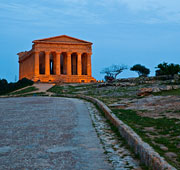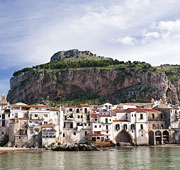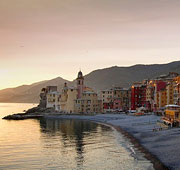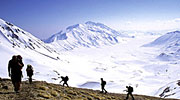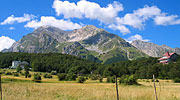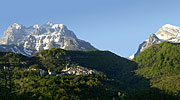Peak viewing in Abruzzo
From man's creations in ceramic to nature's masterpieces in the National Park.
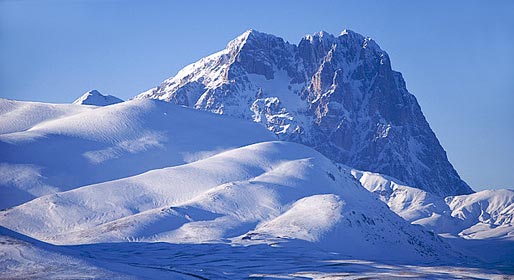
Enter the National Park of the Gran Sasso, and get ready to experience one of the wildest and most beautiful regions in the whole of Italy: Abruzzo.
The rise and fall
Campo Imperatore is one of the well known ski resorts situated within the Park, famous for its immense high plain which extends over 26 kilometers to reach Fonte Cerreto where the cable car station inaugurated by Benito Mussolini in 1938 is located. Ironically, it was in this area that the fascist dictator was captured by the Germans in 1943.
Where wild beasts roam free
The rocky landscape softened by patches of oak and beech trees, and often compared to that of the Scottish Highlands, is the perfect natural habitat for the few remaining wolves and chamois to still roam the mountain side.
The Calderone glacier, the only one of its kind in the Apennines, boasts the highest peak of the whole mountain range: the 2912 meter high Corno Grande
Churches made of china
The presence of both clay and water around Castelli greatly favored the production of ceramics in the town, an art form particularly dear to the resident Benedictine monks who manufactured great quantities of the stuff from the 15th century onwards.
Today's visitors can admire works in any of Castelli's 52 ceramic workshops and in the Francesco Grue Institute of Art, this latter housing an international collection of contemporary ceramics and a monumental nativity scene realized by pupils of the
school between 1965 and 1975.
Approximately a kilometer away from the town lies the Chapel of San Donato which boasts an ornate ceiling adorned with some 780 hand painted ceramic tiles.
The writer Carlo Levi described Castelli's Chapel of San Donato as the majolica equivalent of the Sistine Chapel
Food for fort
Any gastronomic itinerary worth following will include stops at Camarda or Pagnaica, towns famous for their exquisite dairy products such as the highly prized Canestrato doc of Castel del Monte. Other local delicacies are the salame aquilano, the Paganica bean, and saffron.
The Park has its fair share of fortresses, many of which located to the southeast and built so as to guard over tiny medieval villages such as that of Castel del Monte. It is not surprisingly then that in Rocca Calascio a Museum has been created, dedicated to the local fortified architecture.
Ancient Abruzzo, contemporary comfort
Rocca Calascio sits between the picturesque town of Castelvecchio Calvisio and Santo Stefano di Sessanio. Castelvecchio Calvisio is a tiny medieval town built according to a pre-existing octagonal plan left by the Romans.
Santo Stefano di Sessanio was rediscovered by an Italian-Swedish philosopher who, having come across the almost deserted village during a journey across the mountains by bike, decided to purchase a number of the houses and restore them.
Santo Stefano di Sessanio is now a highly acclaimed tourist destination deemed worthy of inclusion in the prestigious "Club of the most beautiful villages in Italy"
Not to be missed, a visit to the town of Barisciano and its Center of Apennine Floral Research, created by the Park authorities in conjunction with the University of Camerino. The center boasts a rare collection or mountain herbs and an impressive botanical garden.

